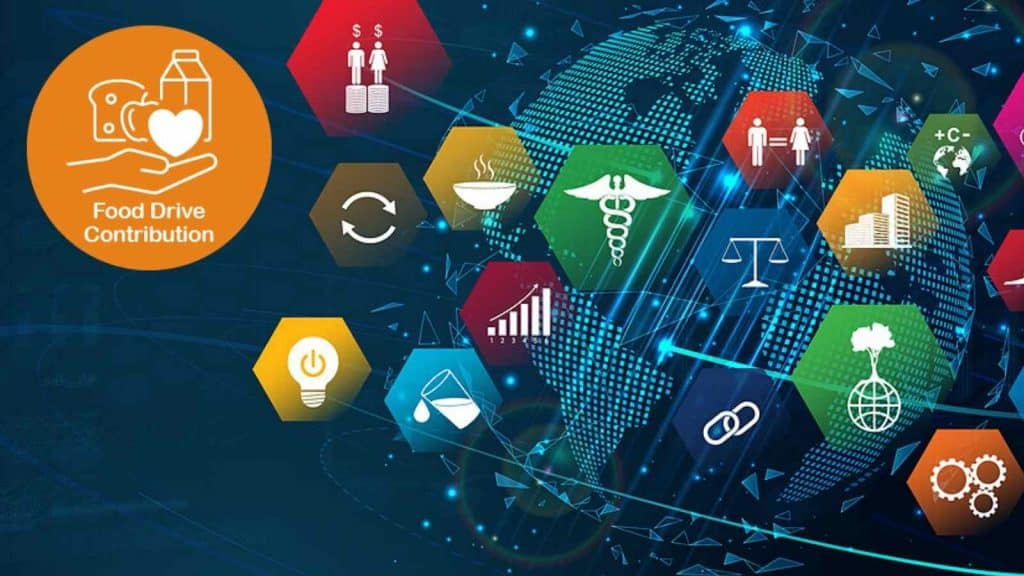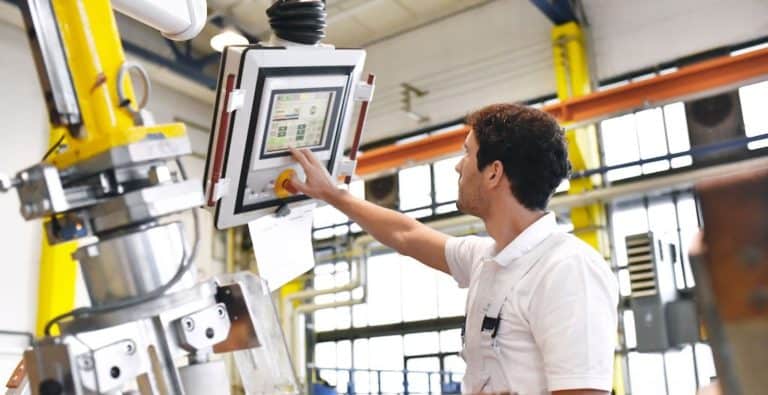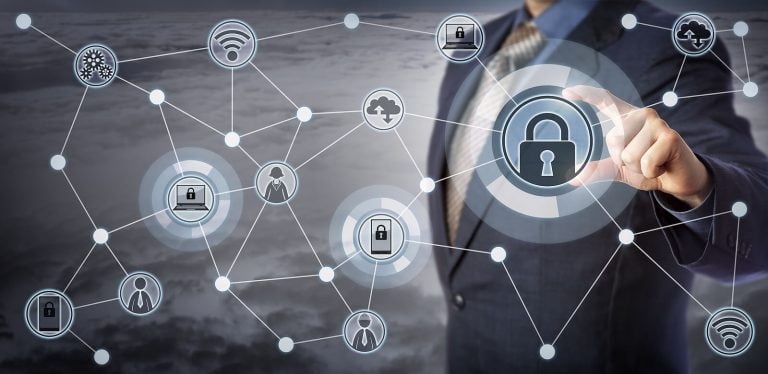ITIL and SDGs = sustainable IT? is written and illustrated by Dr Tuuli Bell
Table of Contents
ToggleIT Chronicles reached out to executives, thought leaders, experts, practitioners, and writers about a unique initiative. ITC would donate to Second Harvest for every article submitted in December by our past contributors. Thank you to all who contribute to this food drive. We appreciate your knowledge and leadership.
Figure 1: A change of perspective helps re-frame problems. Digital innovation and sustainability can work in harmony as we research and adopt innovative solutions. ©2021 Dr Tuuli Bell
Every year, the world generates 4,500 Eiffel towers worth of electronic waste (e-waste), enough to transform into 125,000 life-size jumbo jets.1 Looking at such numbers can be numbing, so let’s change our perspective and focus on solutions. If there’s anything my SPIN training (sales training, not the cycling sort) has taught me, it is that behind every pain lies opportunity.
The citizens of this world are taking action2. Consequently, governments are increasingly making it a legal requirement for companies to care about sustainability. Triple bottom line (TBL) that includes social and environmental metrics in addition to financial ones, is no longer an optional extra for large companies in the UK3,4, for instance.
But what is the role of IT and digitalization, not forgetting all that e-waste, in a sustainable future?
ITIL and SDGs: outcome-driven and adaptable frameworks
Frameworks help organizations to make sense of data, processes and complex structures. Sustainable IT is no exception. The natural frameworks for sustainable IT include ITIL and Sustainable Development Goals (SDGs).
As a very short introduction to ITIL5, it is a framework that helps manage service lines in your organization. ITIL was originally developed for managing internal government IT services. Albeit still a favorite amongst IT professionals, ITIL is equally valid for pure business services. Personally, I find it very exciting how ITIL as a framework has been successfully evolving; and continues to do so with the latest incarnation of ITIL4. The earlier referenced book ITIL4: Sustainability in Digital and IT, AXELOS, digital edition, 20211 demonstrates the power of the framework and its adaptability to new domains.
Similarly, the United Nations (UN) SDGs6 were created for developing countries and their governments; aiming to bring equity to our world’s citizens. Each of the 17 goals concern Environmental, Social or Governance (ESG) aspects. Again, pioneering companies have adopted the framework into business environments. They are helping the commercial sector, at the very least, become more sustainable and with any luck, drive the green revolution7.
Put together, the aforementioned frameworks give a solid foundation for sustainable IT. IT can help get to the UN Goals faster, e.g. enabling dematerialization through digitalization1 (SDG 12: responsible consumption and production) or bringing equity and supply chain transparency through blockchain1 (SDG 8: decent work and economic growth and SDG 10: reduced inequalities).
However, the influence is two-sided: sustainability can also drive IT innovation. An example is SDG Monitor8, a visual dashboard tool that helps companies analyze and communicate their ESG impact to and of their suppliers, employees and customers. Similarly, the need for paperless processes combined with automation helps FlowForma reduce their customers’ carbon footprint9. Importantly, pioneering companies such as Fl@tWorld have built low energy usage into their platform10 without compromising functionality and security.
Sustainability has inspired a wave of new thinking and SDGs can be adapted to technology-driven areas such as sustainable presales11, tourism12, watch-making13, construction14, biodiversity valuations15, or e-waste16, to name just a few; pushing the boundaries of creativity, process innovation and technology.
Conclusion
In summary, sustainable IT is about working to make the world a better place through technology. The work can be direct such as creating low-energy usage applications and paperless processes; or indirect such as building sales organizations that support sustainability customers. Whichever way we choose to influence, it is all about taking action, measuring progress and focusing on outcome.
What can we all do to make the world a better place? One of my favorite resources is the Lazy Person’s Guide to Saving the World15. For those into technology, Giki Zero16 is a tool that helps you track your personal goals easily. Ellen MacArthur Foundation19, 20 provides in-depth guidance about circular economy, a way of living and working sustainably.
Amidst the climate change emergency and biodiversity crisis, we should remember that as a community of humans, we are capable of near miracles. As a society, we have come to appreciate community, mental wellbeing, and helping of others in unprecedented ways. By building positive distractions and bite-size learning, we can influence behavioral change across communities.
And truly, change the world.
References
- ITIL4: Sustainability in Digital and IT, AXELOS, digital edition, 2021
- #DecadeOfAction campaign launched by the UN, see www.unsdg.un.org/2030-agenda/decade-action and social media channels
- Guide 2021, Climate Data and Metrics, Climate Financial Risk Forum, www.fca.org.uk/publication/corporate/climate-financial-risk-forum-guide-2021-data-metrics.pdf, 2021
- Mandatory climate-related financial disclosures by publicly quoted companies, large private companies and LLPs, UK Government Consultation Outcome, www.gov.uk/government/consultations/mandatory-climate-related-financial-disclosures-by-publicly-quoted-companies-large-private-companies-and-llps, 2021
- ITIL® 4: the framework for the management of IT-enabled services, AXELOS, www.axelos.com/certifications/itil-service-management
- The Goals, United Nations, www.sdgs.un.org/goals
- The ten point plan for a green industrial revolution, UK Government Policy paper, www.gov.uk/government/publications/the-ten-point-plan-for-a-green-industrial-revolution, 2020
- SDG Monitor, measurement tool for SDGs, www.sdgmonitor.co
- Go Paperless: Save Your Money While Saving Our Planet!, Alannah Kennedy, FlowForma, www.flowforma.com/blog/go-paperless-and-save-your-money-while-saving-the-planet, 2021
- Fl@tWorld, Optimise supply chain efficiency: Supply chain integration and optimisation through a single view, www.flatworld.world/supplychain
- What is sustainable presales?, Dr Tuuli Bell, Tuuli Bell Ltd, www.tuulibell.com/latest-news/what-is-sustainable-presales, 2021
- Singular Places, the ultimate feel-good & impact-driven travel booking site, www.singular-places.com
- Decide & Act, the responsible Swiss watch, www.decideandact.com
- Supply Chain Sustainability School, www.supplychainschool.co.uk
- Endangered Wildlife OÜ is a disruptive Tech4Good Fintech company, www.endangeredwild.life/
- Closing the Loop, waste neutral ICT hardware, www.closingtheloop.eu
- The Lazy Person’s Guide to Saving the World, United Nations, https://www.un.org/sustainabledevelopment/takeaction/
- Giki Zero, Your step by step guide to a lighter footprint on the planet, www.zero.giki.earth
- Ellen MacArthur Foundation, works to accelerate the transition to a circular economy, www.ellenmacarthurfoundation.org
- Ellen MacArthur Foundation, Episode 44: How digital platforms are enabling circular economy innovation www.ellenmacarthurfoundation.org/videos/how-digital-platforms-are-enabling-circular-economy-innovation





